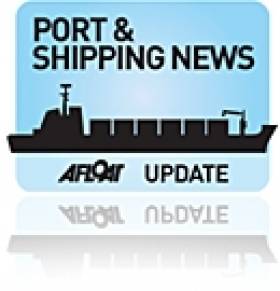Displaying items by tag: overload
Ship Owner Fined for Overloading
#SHIPPING – At a hearing yesterday at Southampton Magistrates Court the German owners of the Antigua and Barbuda registered cargo vessel 'Katja' pleaded guilty to the overloading of their vessel which had arrived in Liverpool laden with rock salt from the St. Lawrence Seaway, Canada in November 2010.
The vessel was loaded to its marks with rock salt and sailed from Goderich to arrive at the Manchester Ship Canal on the 23rd November 2010. Rock salt was in high demand to treat UK highways at this time.

The 'Katja' - Photo: courtesy of Maritime and Coastguard Agency
As the vessel entered the River Mersey, the pilot on another passing vessel noticed that the Plimsoll Line and load lines were not visible and the vessel appeared very low in the water. When the vessel arrived in the Queen Elizabeth II Dock it was inspected by MCA Port State Control Officers who found that the load line that marks the safety limit of the vessel was submerged by 39.5 cm.
Katja Schiffahrtsges Gmbh of Haren, Ems, Germany, owner of the ship Katja, was fined £28015 plus costs of £5000 awarded to the MCA.
In summing up the Magistrates stated "We share the Maritime and Coastguard Agency's view of the seriousness of the case, however accept that the overloading was not for gain. We have also considered the early plea of guilty and have reduced the fine of £42000 accordingly.
Simon Milne, from the Maritime and Coastguard Agency said:
"Since the good work of Samuel Plimsoll, the application and enforcement of load line marks have prevented the loss of many vessels and have saved the lives of many seafarers.




























































